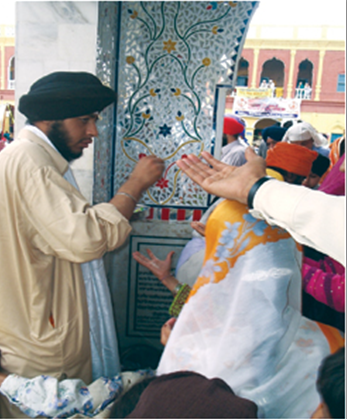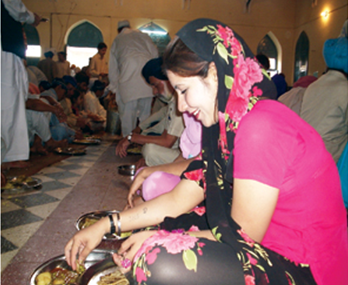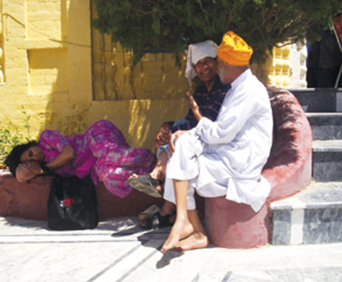Punja Sahib
(Created page with "{| class="wikitable" |- |colspan="0"|<div style="font-size:100%"> This is a collection of articles archived for the excellence of their content.<br/>You can help by converting...") |
Revision as of 13:32, 29 October 2013
This is a collection of articles archived for the excellence of their content. Readers will be able to edit existing articles and post new articles directly |
Punjab Saheb
The cross-border celebration
By Text and photographs by Amjad Ali
The followers of the Sikh religion from across the globe gather at gurdwara Punja Sahib in Hassanabdal every year on April 11 to celebrate the religious and traditional festival of Besakhi. They renew their pledges of exercising harmony and brotherhood in their religion.
Guru Govind Singh Maharaj, the tenth Guru of Sikhism, was born in Patna and later migrated to Hassanabdal to preach in the area. Govind Singh (1666-1708) instituted certain practices that are now part of the Sikh religion. He created the military fraternity called the Khalsa (pure) and introduced the practices of wearing a turban, carrying a dagger and never cutting the hair or beard. The Besakhi festival marks the constitution of Khalsa Panth in 1699. It was formed to protect the sanctity of Sikhism and fighting social evils from the society.
The tales of the miraculous the Punja (handprint) are associated with Guru Govind Singh Maharaj. It is said that one day the Guru was refused water from a local preacher and on the latter’s insistence, a huge stone was hurled towards the followers of the Sikh religion from atop a hill. To protect his followers, Guru Govind Singh Maharaj stopped the stone with his hand, and it miraculously turned into wax; to this day the stone bears the handprint of the Guru. The Sikhs declare this handprint a symbol of peace and a source of inspiration for piety and brotherhood. They touch the handprint of Guru Govind Singh Maharaj with a belief that it would mitigate their miseries and hardships.
The continuous oozing of water from underneath this stone, affixed in the premises of Gurdwara Punja Sahib, is also described as a miracle of Guru Govind Singh Maharaj. The pilgrims take a bath (ashnan) in this water which they claim began pouring out due to a miracle by Guru Govind Singh. Ashnan takes place twice a day, early in the morning and at sunset and is followed by worship.
The three-day event of Besakhi begins every year on the first day of Besakh, the fifth month of the Bikrami calendar (April 12) with the recitation of the scriptures of Guru Granth Sahib. Followers recite this 1430-page scripture during the three days without a break. The celebrations culminate with the end of the recitation on the third day of Besakh (April 14). Bhog, the ending rite takes place after this.
The followers then perform keerthan for their purification. It is followed by ardaas (dua) where the followers seek divine forgiveness of their follies. During their stay at the gurdwara, Sikh pilgrims sleep on the floor as a ritual and the requirement of their belief.
The festival is celebrated throughout the world, but its celebrations in Pakistan bear special significance because the country hosts the birth place of Baba Guru Nanak, the founder of Sikh religion, at Nankana Sahib near Lahore, and is the place of their last Guru Govind Singh Maharaj, at Hassanabdal.






